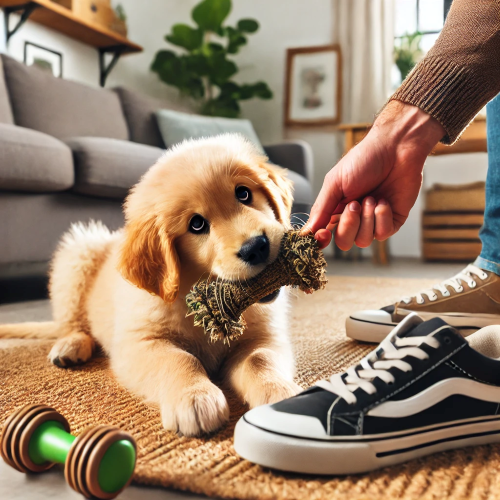Puppy chewing can wreak havoc on your home, but it’s a natural behavior. Find out how to prevent destruction and redirect chewing to safe alternatives with this expert guide. Keep your pup and belongings safe with these practical puppy training tips!
Why Puppies Chew
Chewing helps puppies explore their world and soothes teething pain, typically between 3-6 months. It’s also a way to relieve stress or boredom. Without guidance, they’ll target shoes or furniture, making redirection a must for a peaceful home.
Step 1: Provide Chew Toys
Offer a variety of chew toys—rubber bones, ropes, or stuffed toys work well. Rotate them to keep interest high and praise your puppy when they chew these instead of forbidden items. This builds a habit of appropriate chewing.
Step 2: Supervise and Interrupt
Watch your puppy closely indoors. If they chew something wrong, say “no” calmly and swap it for a toy. Consistency teaches what’s off-limits without scaring them, helping stop puppy chewing on the wrong things.
Step 3: Puppy-Proof Your Home
Remove temptations like shoes, cords, or low-hanging curtains. Use bitter spray on furniture if needed. A safe environment reduces chewing mishaps while they learn, protecting both your pup and your possessions.
Managing Teething
Teething boosts chewing as gums hurt. Freeze toys or wet cloths for relief and keep sessions short to distract from discomfort. This phase passes, but habits formed now stick, so guide them to chew toys consistently.
Tips for Success
Exercise reduces boredom chewing—aim for daily play or walks. Hide toys to mimic hunting, keeping them engaged. If chewing persists, check for stress or hunger. Patience and variety in toys are key to success.
Stopping destructive chewing protects your home and keeps your pup safe. Redirect consistently, and they’ll learn fast. Explore more puppy training tips on our site to tackle other common behaviors!
